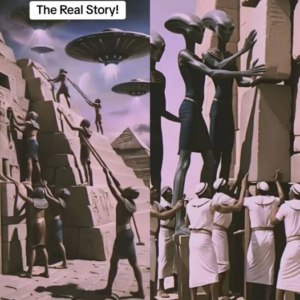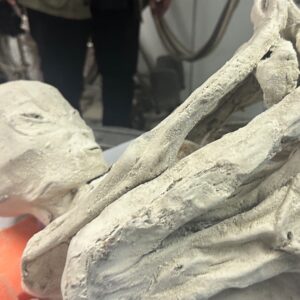The Lycurgus Cup, named after the scene depicting King Lycurgus of Thrace, is a 1,600-year-old Roman chalice with a jade green hue that alters its color based on the light’s direction. Since its acquisition by the British Museum in the 1950s, scientists have been perplexed by its properties. The cup mystified researchers as it displayed a jade green color when illuminated from the front, yet transformed into a blood-red hue when lit from behind.

The mystery was unraveled in 1990 when researchers in England examined broken fragments under a microscope. They discovered that Roman artisans were pioneers in nanotechnology, having infused the glass with particles of silver and gold. These particles were ground down to sizes as small as 50 nanometers in diameter, which is less than one-thousandth the size of a grain of table salt.

The precision of the work was so exact that the resulting effect couldn’t have been accidental. In fact, the specific combination of the previous metals indicates that the Romans had mastered the use of nanoparticles – an incredible achievement, as noted by archaeologist Ian Freestone of University College London.
When exposed to light, electrons associated with the metal flecks vibrate in ways that modify the color depending on the observer’s position.

Now it appears that the technology once employed by the Romans for creating exquisite art may have numerous additional applications. The highly sensitive technology utilized by the Romans could potentially aid in diagnosing human diseases or identifying biohazards at security checkpoints. Gang Logan Liu, an engineer at the University of Illinois at Urbana-Champaign, who has long been dedicated to utilizing nanotechnology for disease diagnosis, and his colleagues recognized the untapped potential of this effect.

In a study conducted last year, they crafted a plastic plate filled with gold or silver nanoparticles, essentially forming an array equivalent to the Lycurgus Cup. When various solutions like water, oil, sugar, and salt were applied to the plate, the colors underwent changes. The prototype demonstrated sensitivity 100 times greater to altered levels of salt in a solution compared to current commercial sensors employing similar techniques. This innovation may eventually find its way into handheld devices designed for detecting pathogens in samples of saliva or urine, or for preventing terrorists from carrying hazardous liquids onto airplanes.

This is not the first time that Roman technology has surpassed that of our modern day. Scientists examining the composition of Roman concrete, submerged under the Mediterranean Sea for the last 2,000 years, discovered its superiority in terms of durability and environmental impact compared to modern-day concrete. The insights gained from this ancient technology are now being utilized to enhance the concrete used in contemporary construction. It’s ironic that scientists now look to the achievements of our so-called ‘primitive’ ancestors for guidance in developing new technologies.



